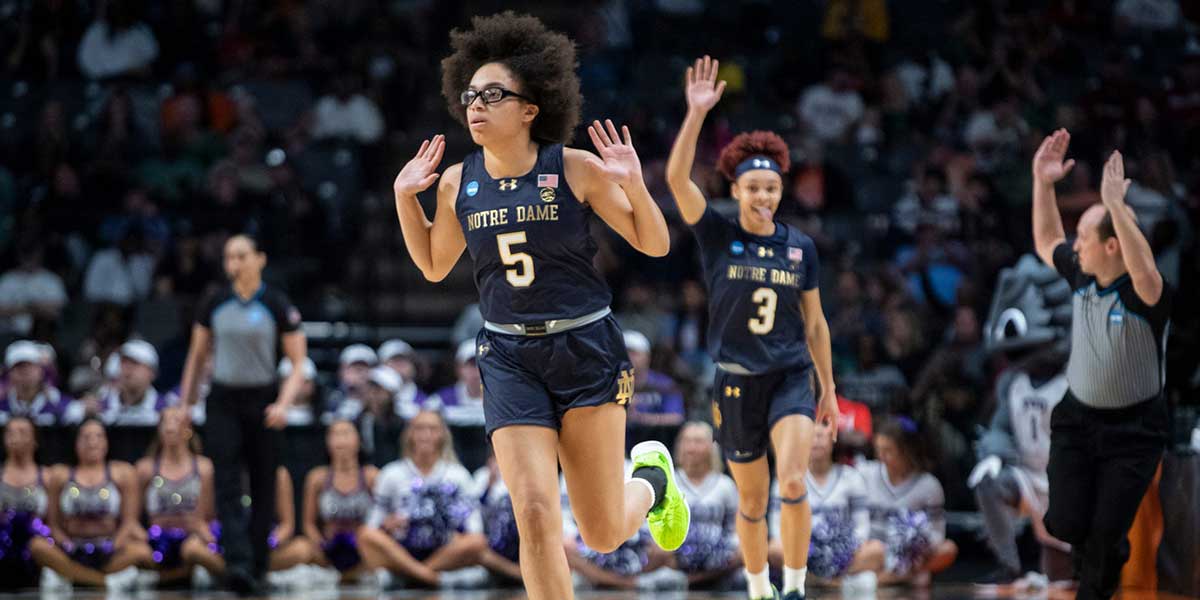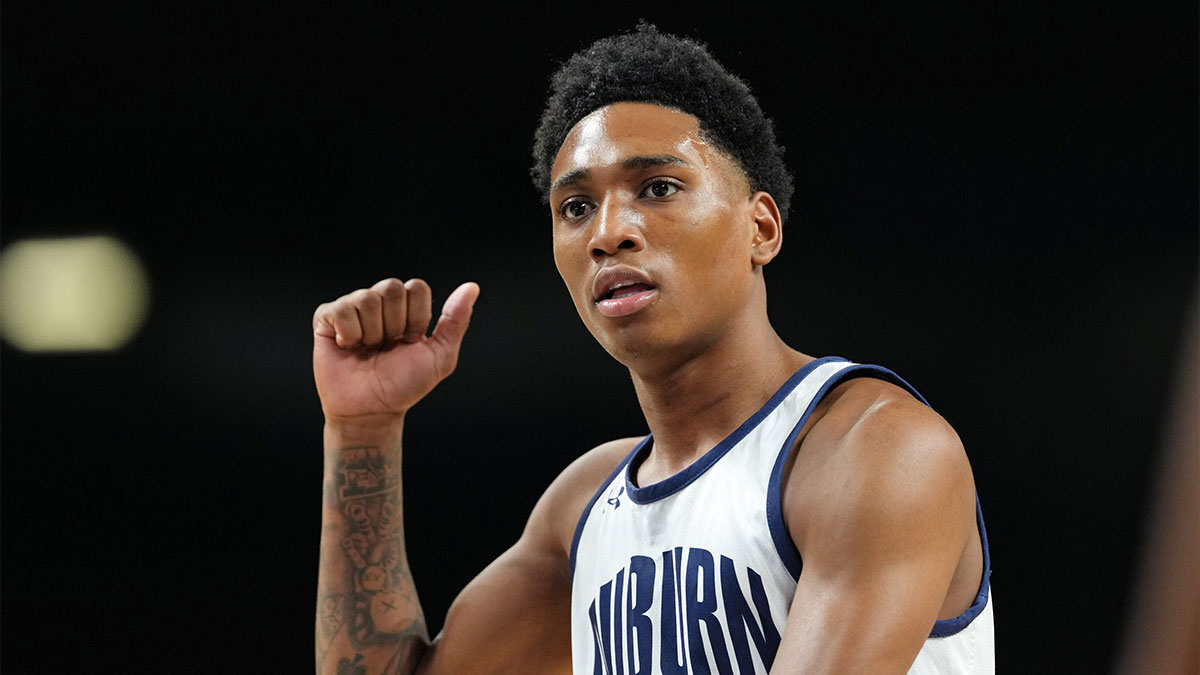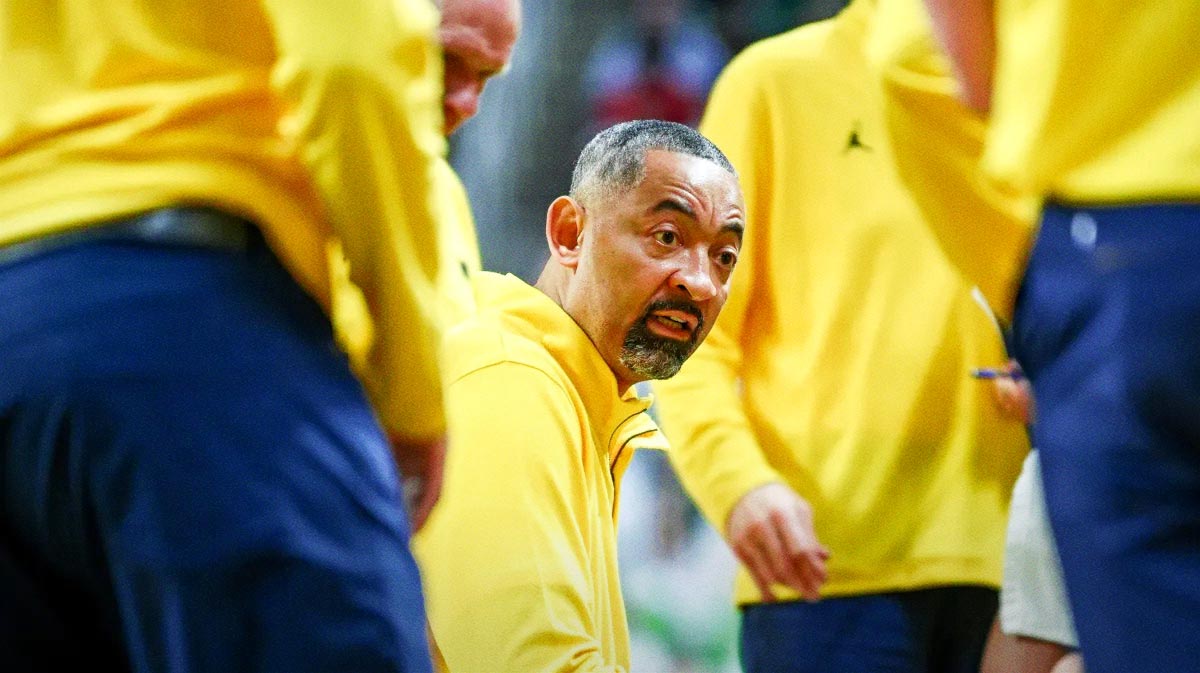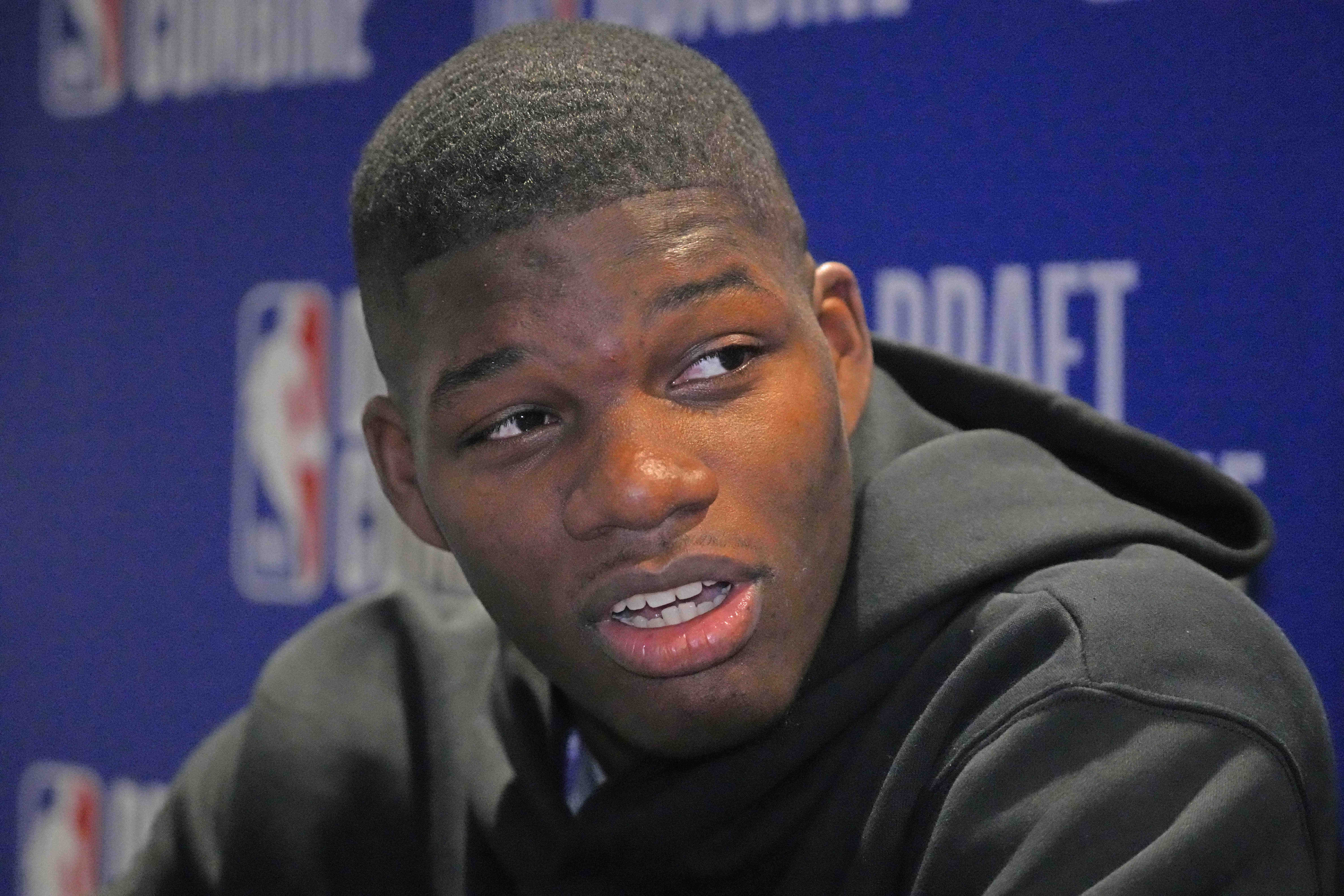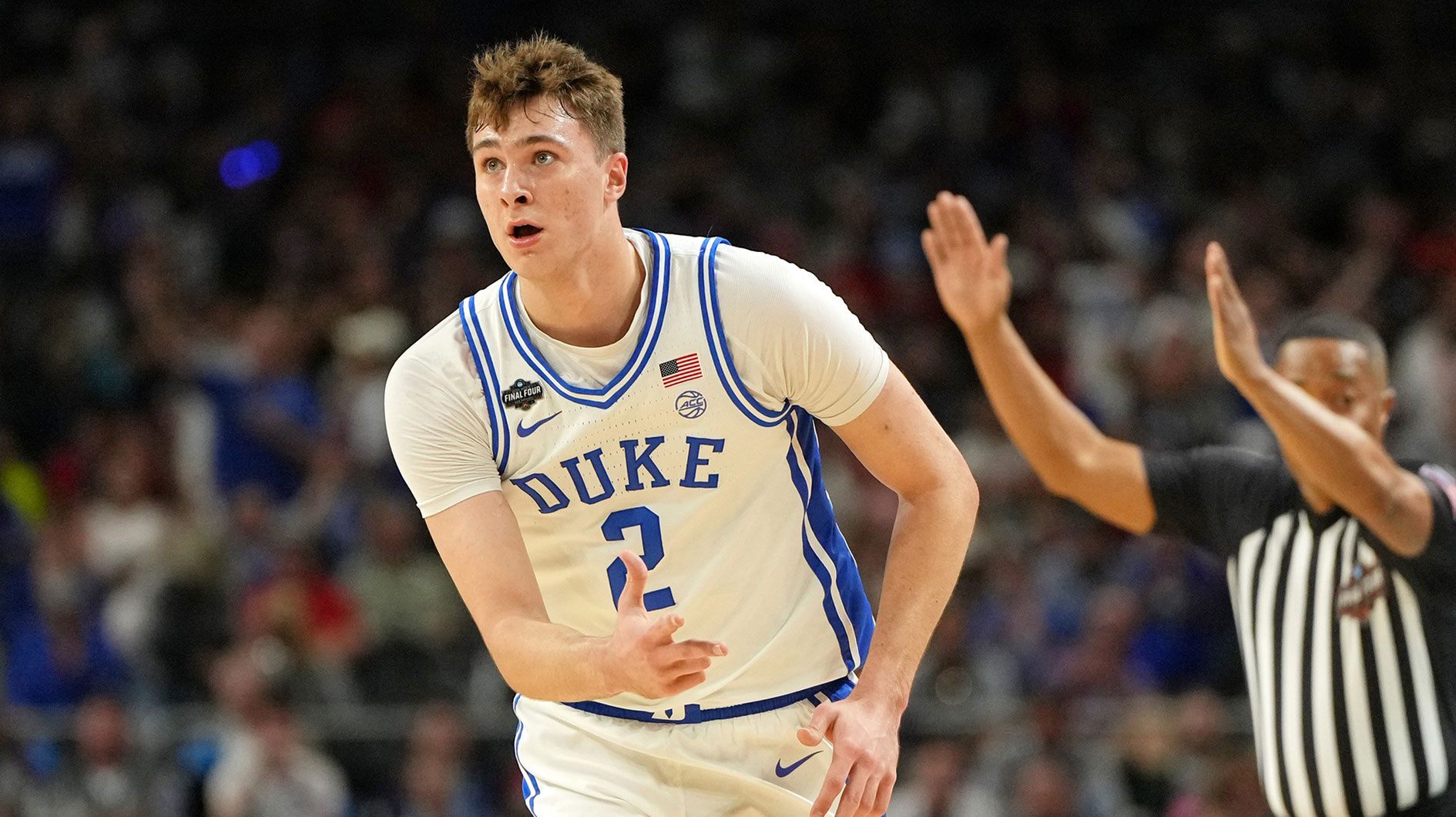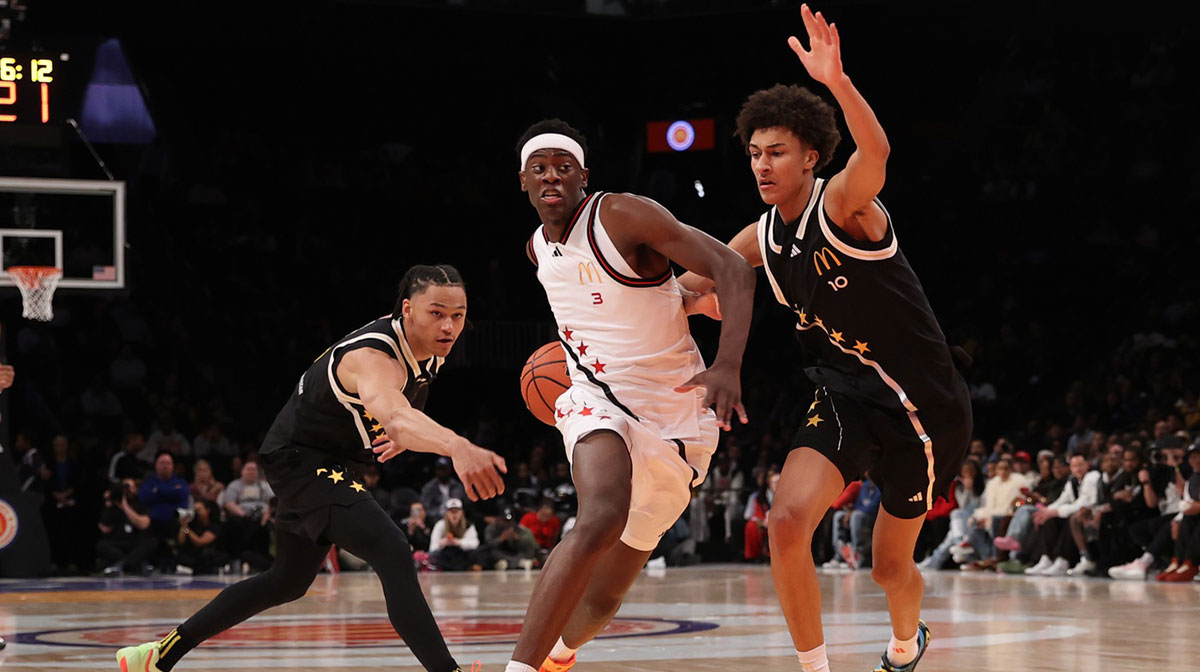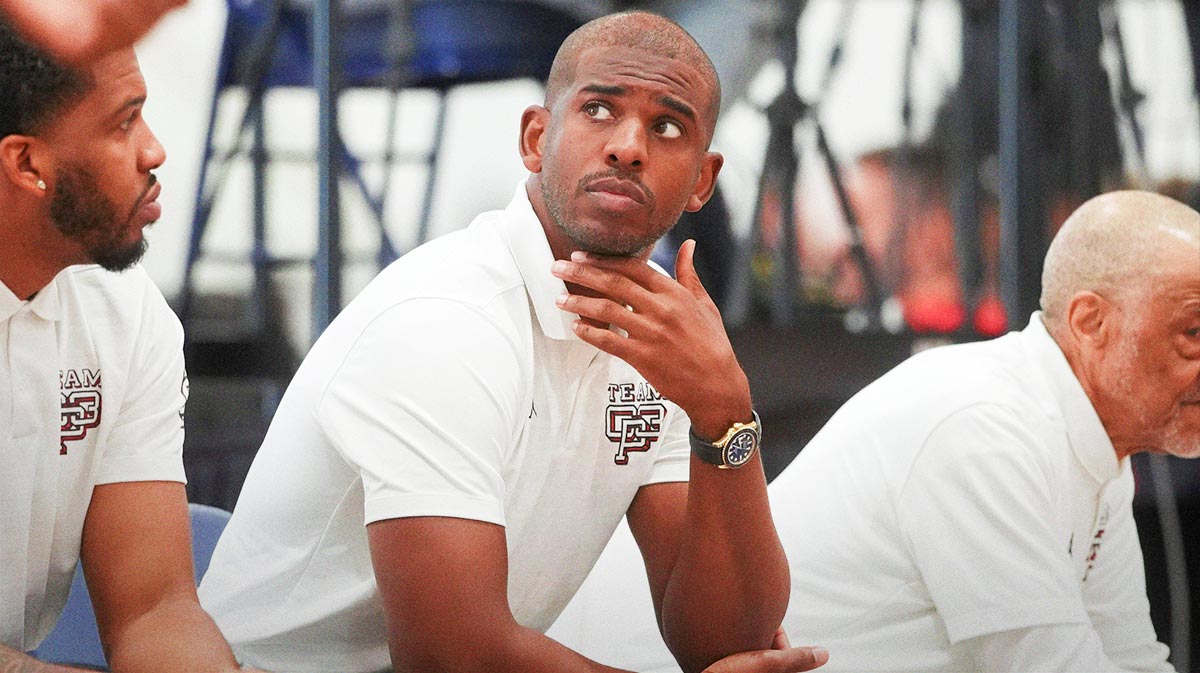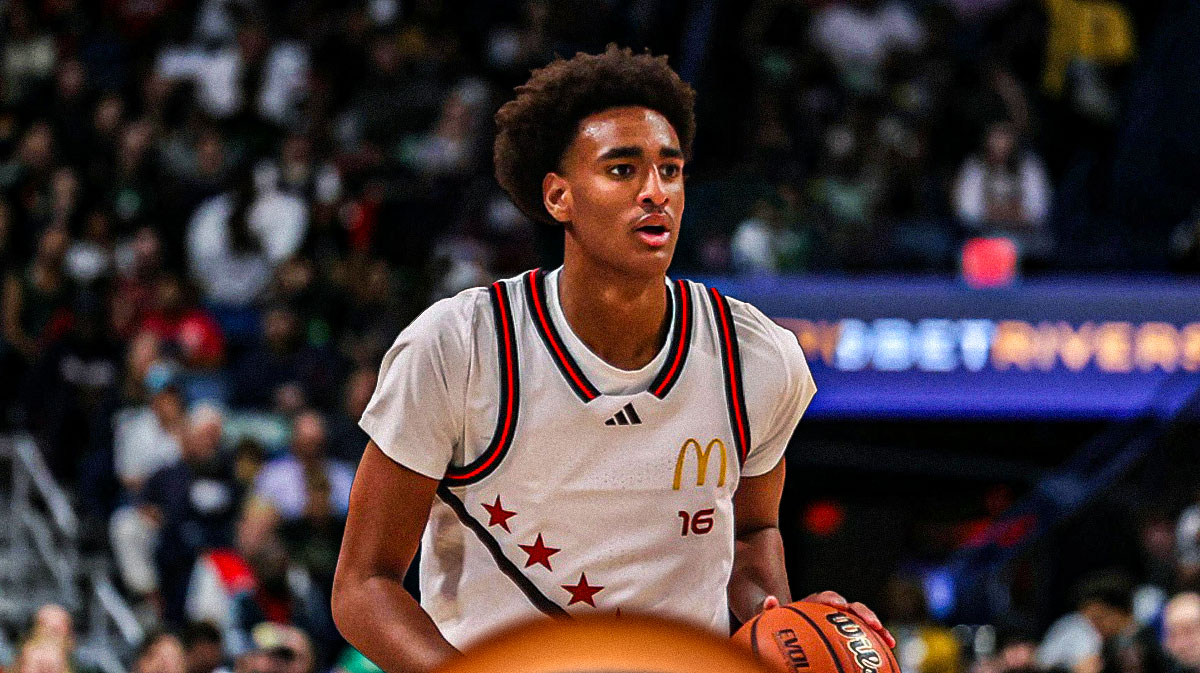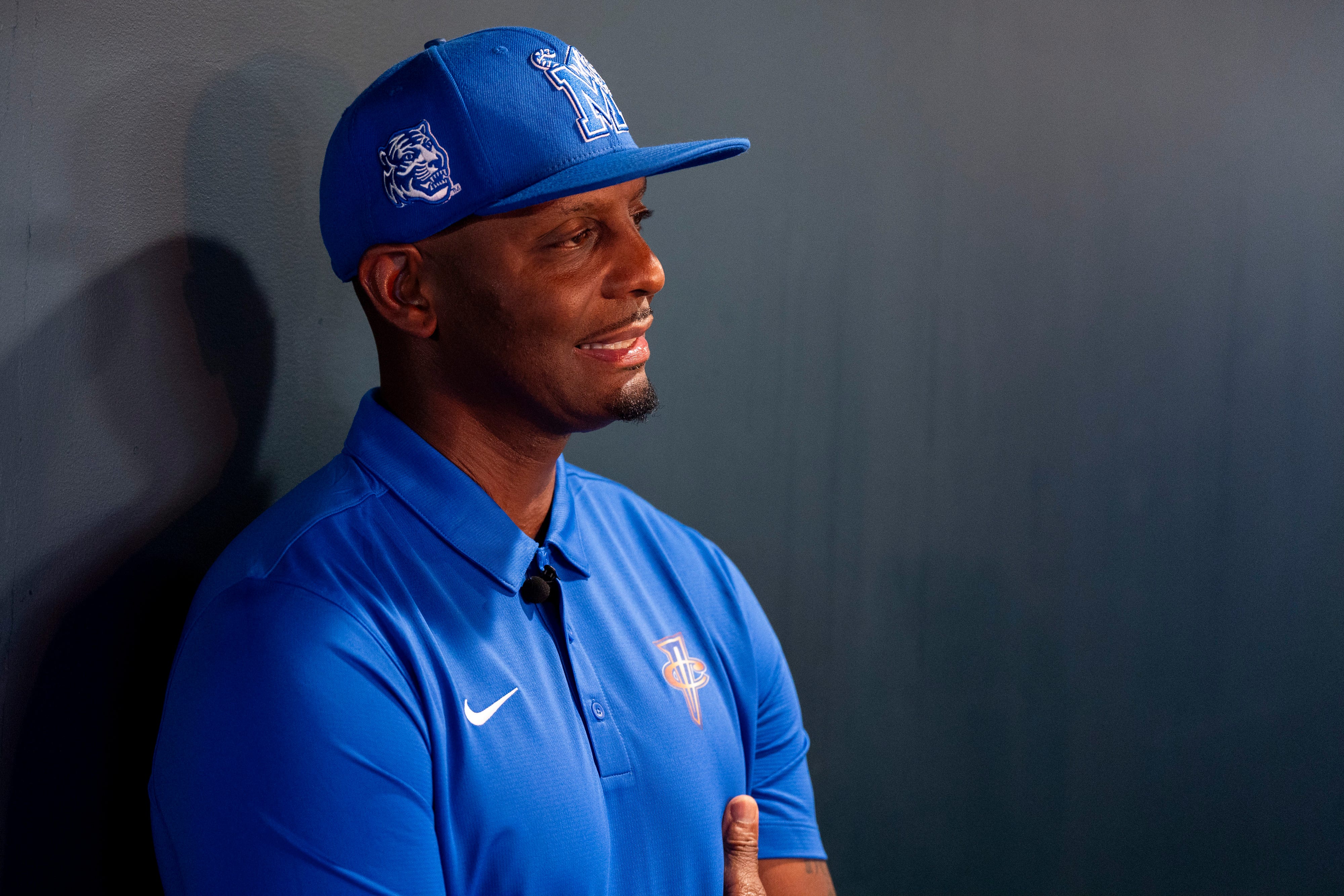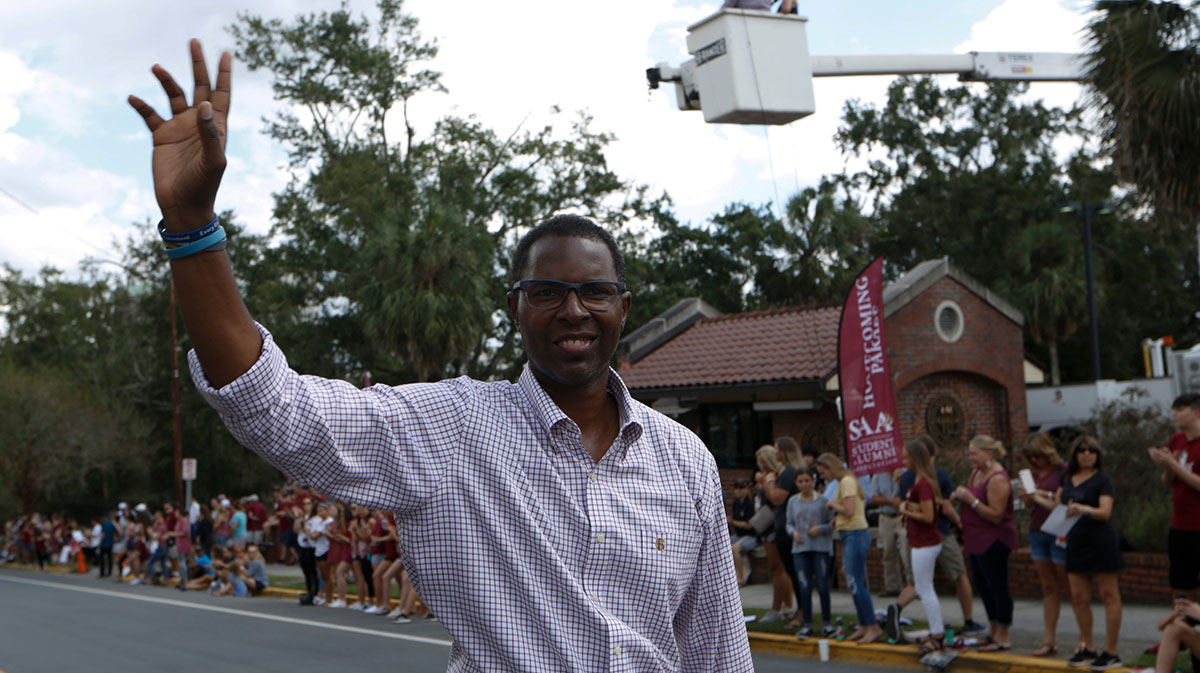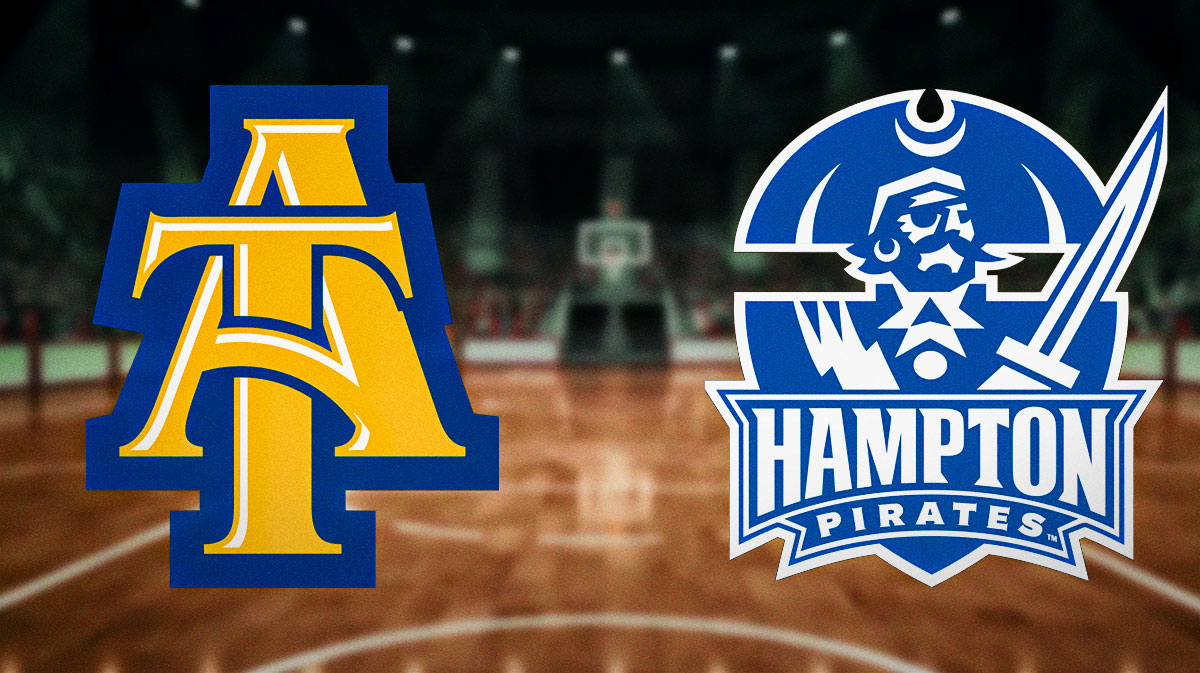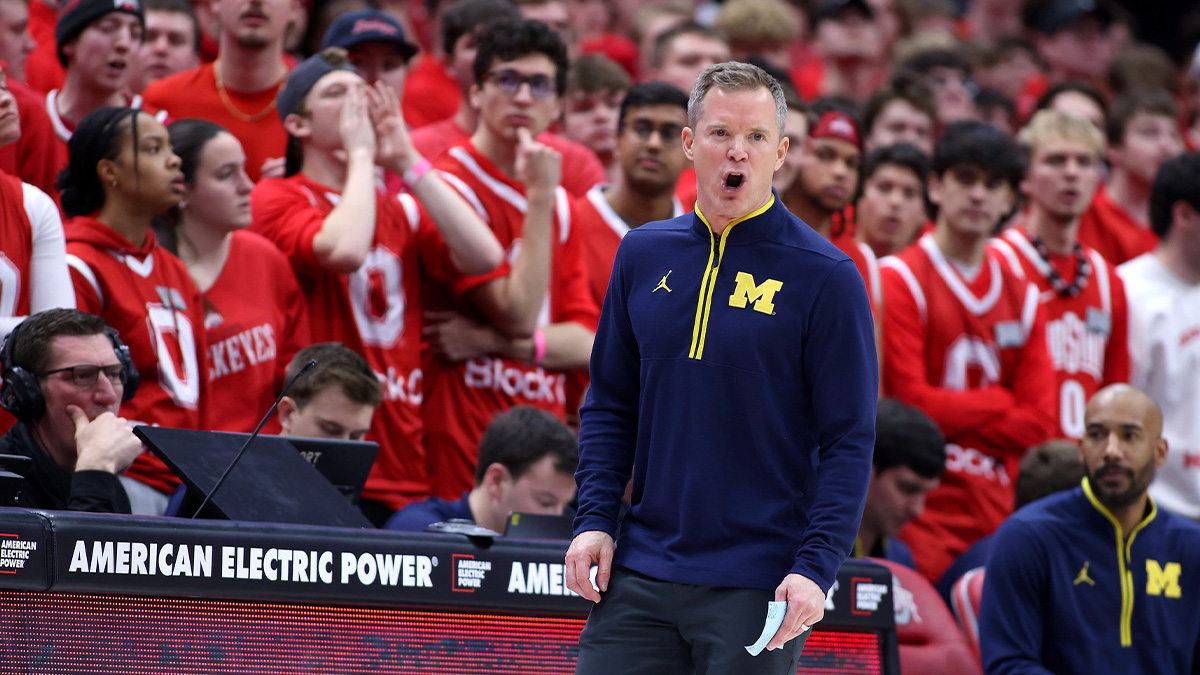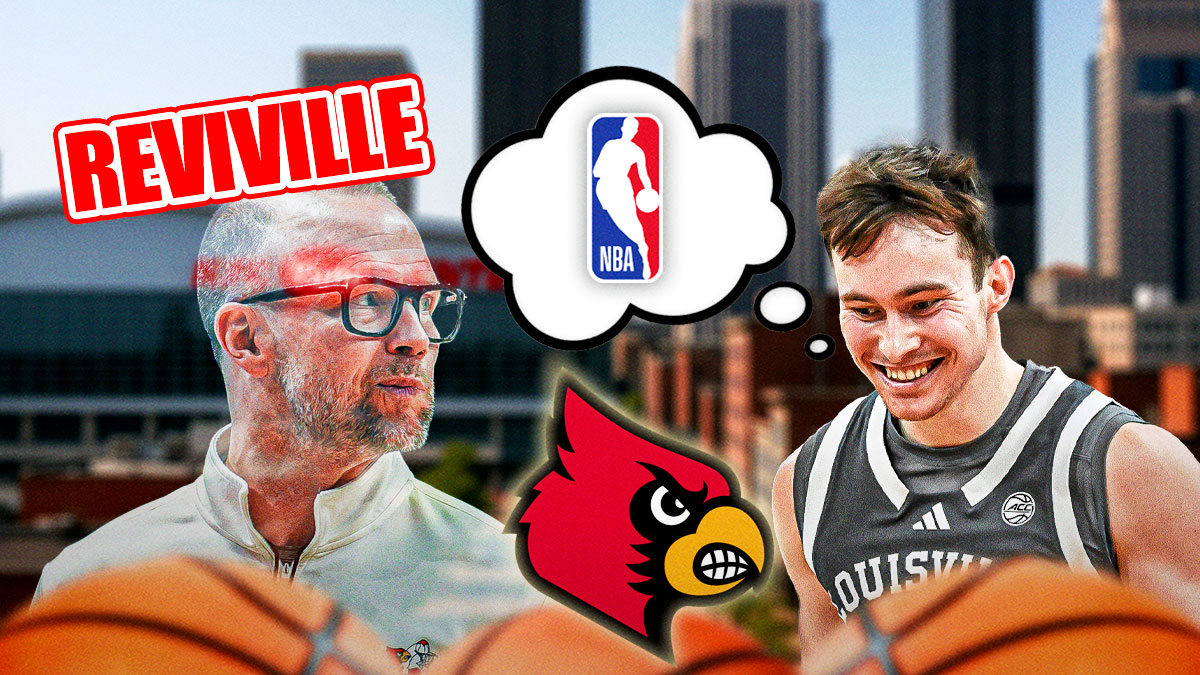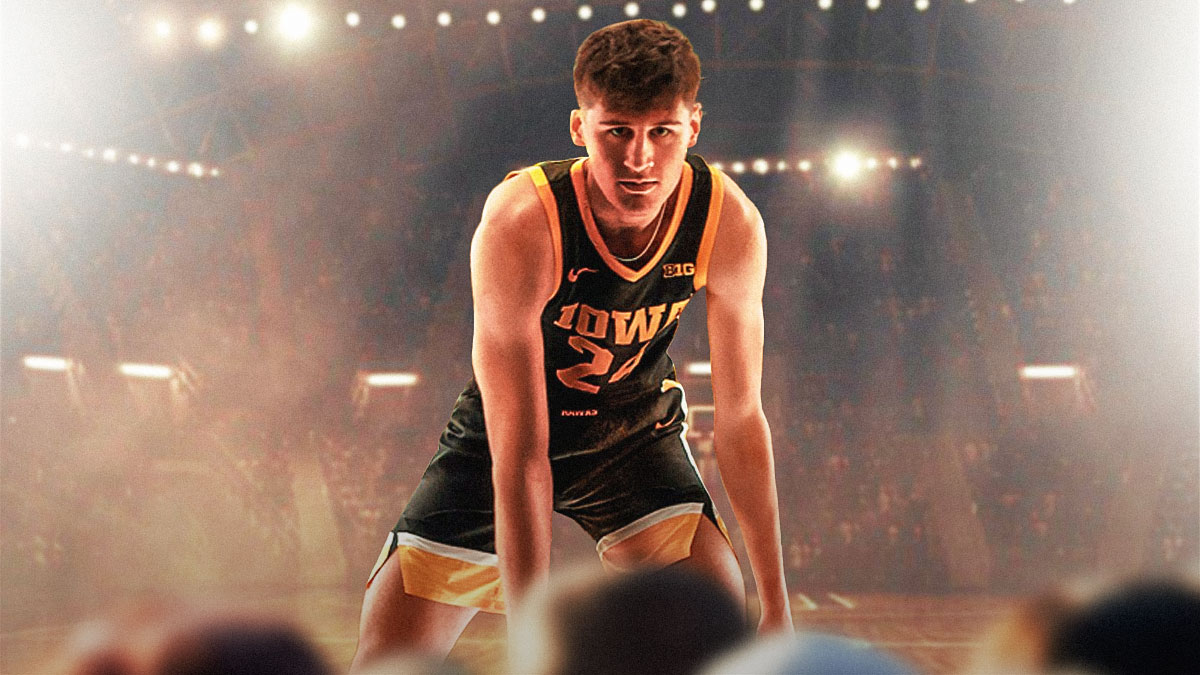Signature sideline attire has been an identifier for certain college basketball coaches.
Former Illinois coach Lou Henson used to wear a tequila sunrise orange sport coat, championing a key Illini color. Former St. John’s coach Louie Carnesseca went with sweaters. Bob Knight made every game casual Friday by wearing polos. West Virginia’s Bob Huggins has gone a step farther and dresses like he’s headed for the weight room.
For much of his coaching career, Kelvin Sampson has favored a tie with a light-blue shirt. Considering how his teams at Washington State, Oklahoma, Indiana and Houston have succeeded thanks to blue-collar effort, it’s an appropriate clothing choice. Even if its origin was random.
Sampson’s first year at Oklahoma and OU was picked to finish near the bottom of the Big Eight. In February, the Sooners played at No. 2 Kansas and as Sampson bluntly put it, the Jayhawks “effed us. The final score (93-76) did not indicate how that game went.”
Bob Hersom, a veteran sportswriter in Oklahoma, approached Sampson after the game and showed him a list of OU’s remaining games – at Colorado, Missouri, Kansas, Oklahoma State in Norman, at Iowa State and at Missouri. Every team but Colorado was ranked.
“Kelvin, I don’t think you guys will win another game,” Hersom bluntly pronounced.
For the road trip to Colorado, Sampson was at home and scurrying to find a clean white shirt. His only option was a blue denim shirt with double pockets. “It looked like something you’d wear to a cowboy bar,” he said. “I said, ‘What the hell.’ I threw it in my bag.”
Dear reader, you know what’s coming, right?
OU won at Colorado. Sampson wore the shirt again when No. 9 Missouri visited. Another win. Then Kansas, now No. 1, came to town. Win. Then an overtime defeat of an Oklahoma State team that would reach the Final Four.
Oklahoma then went to Ames and beat Iowa State on Fred Hoiberg’s senior day. “Who the hell wins that game?” Sampson said.
The streak ended with an overtime loss at Missouri (also on senior day). The 5-1 finish helped the Sooners earn a bid to the 1995 NCAA Tournament. And the superstitious Sampson, who is entering his fifth season at the University of Houston, decided that coaching while wearing a blue shirt was good luck. His college coaching career has contrasted blue skies with blue moods.
**************
Kelvin Sampson is 63 and, like the insurance commercial, he’s seen a few things.
He started his coaching career at Montana Tech where he taped ankles and drove the bus. Sampson was basically on his own as a coach and his first job became a teaching laboratory where he tweaked and tinkered with basketball test tubes. Sampson developed a simple three-pronged approach to winning – defense, rebounding and toughness.
That led to his first Division I job at Washington State where he continued to grind for seven seasons. In 1994 he was hired at Oklahoma to replace Billy Tubbs. At that time, the Big Eight had coaches like Eddie Sutton, Roy Williams, Norm Stewart and Johnny Orr. Conference games were either back alley knife fights or barroom brawls.
Over a dozen seasons, the Sooners made the NCAA Tournament 11 times including a Final Four in 2002. OU appreciated the success but was and still is a football school. When Indiana offered the chance to coach a blue-blood program, Sampson left for Bloomington in 2006.
In hindsight, it was a mistake, a career-killer decision.
As they had at Oklahoma, Sampson and his staff had surpassed the limit on permissible phone calls with recruits. (That rule no longer exists in the NCAA Manual.) After the investigation, the NCAA penalized Indiana with three years on probation and slapped Sampson with a five-year show cause penalty. Sampson had resigned at Indiana in late February 2008.
After climbing and clawing for 21 seasons to climb the Division I ladder, he was out of work and ostracized.
“My wife Karen said there’s always a silver lining and we’re gonna find the silver lining in this,” Sampson said.
Just hours after the news broke, San Antonio Spurs coach Gregg Popovich called and tossed Sampson a life/career preserver – a job on his staff. Popovich and Sampson had bonded over a month together in 2002 as they served as coaches for the USA team in the 2002 FIBA World Championship.
“We had spent a lot of time together – 36 days – in 2002 and he’s now one of my best friends,” Sampson said. “We hit it off in terms of basketball and friends.”
The Spurs job started a six-year stint as an NBA assistant. After basically teaching himself how to be a college head coach, the NBA gave him the chance to restock his coaching toolbox. It was like visiting the library of Congress after spending a career browsing in a local bookstore.
“There’s an old saying – you don’t know what you don’t know,” Sampson said. “That hit me upside the head. What I learned from Pop is different from what I learned from Scott Skiles (Milwaukee) and what I learned from Kevin McHale (Houston).
“The first day I was with the Spurs, they were going over the scouting report for their game. I was enthralled, I was mesmerized. I had no idea you could guard a pick and roll so many different ways. In college, I had one way.”
For Sampson, the NBA had always been a curiosity and not a bucket list item. But his time in the pros – plus the fact he considered himself persona non grata in college hoops – left him thinking that if he was to be a head coach again, it would be in the NBA.
“I was an NBA guy,” Sampson said. “I saw myself as an NBA coach.”
“I think he’d be a good NBA coach,” Memphis Grizzlies coach J.B. Bickerstaff told The Athletic. “Our business is about relationships and trying to get guys to buy into one agenda, and I think those are things he does well.”
**************
Sampson is not the feather that floats away at the end of “Forrest Gump,” but he agrees that careers and lives are often controlled by kismet.
When his NCAA show cause sentence expired, Sampson’s agent started getting feelers about college jobs. The feeling wasn’t mutual. Sampson admits there was a touch of bitterness and resentment that tempered his interest about college hoops.
Fate lent a hand and changed his outlook.
In February of 2014 while Sampson was on the road with the Rockets, he called his father after a game. John W. “Ned” Sampson had lost his wife and Kelvin’s mother five weeks earlier. Ned, who was in poor health after several strokes, was never much of a talker.
“He always called me ‘fella,’” Sampson said. “He’d say, ‘Fella, your team played good.’ He was a helluva high school coach and knew the game. When he told me we played a good game, it didn’t happen that often, but that was like winning a national championship.”
This phone conversation, from one coast to the other, was different. After Sampson mentioned that several colleges had shown interest, his father became a chatter box. And at one point, father told son that he was at his best as a college coach.
Ned Sampson passed away the next day.
About a month later, UH coach James Dickey resigned, and Sampson was a leading candidate. Sampson’s son Kellen, who had gone into coaching, was out of a job after the staff at Appalachian State was fired. Kellen considered Houston, a program that had been lost in the wilderness after the Guy V. Lewis Era, was a great opportunity. His father finally agreed.
The Phi Slama Jama days were a distant memory. When Sampson did his on-campus interview, athletic director Mack Rhodes (now at Baylor) hesitated to show him the locker room. The only television was jury-rigged to the wall and the cables were in view. Hofheinz Pavilion, the basketball venue where The Big E, The Dream and Clyde the Glide had dazzled, was little changed from when it had opened in 1967.
Sampson agreed to sign up on the condition that the arena would be upgraded and a desperately needed a practice facility would be built. Top booster Tilman Fertitta donated the money to make both happen.
“What I’ve asked for is for the program, not for me,” Sampson said. “It’s always been to help our program compete. We were at a competitive disadvantage in almost every area. We had to prove we could win before they would support us, but we did, and they have supported us in every way. And not of this would have happened with Tilman Fertitta. He’s been our knight in shining armor.”
Applying his knowledge from the NBA, Sampson has helped Houston regain some swagger and sparkle. After going 13-19 in Year One, the Cougars have won at least 21 games each of the last four seasons. That success brought suitors.
Sampson has had a chance to return to the NBA and an opportunity to consider another college gig. In May 2017, the Orlando Magic called about their vacant coaching job. This past spring, after leading the Cougars to a 33-4 record (a school record for victories) and a Sweet 16 appearance, Sampson was a top candidate for the Arkansas job.
UH countered and squashed that by extending Sampson’s current deal by six years. The incentive-laden deal is worth $18 million. But it’s not about the Benjamins.
“I could see where this place could be special,” Sampson said. “We started winning when he had nothing. I could tell we were headed without saying it. And now it is special not only as a program that’s successful but it’s a special place to me.”
Part of his new contract has Kellen installed as the head coach in waiting. His sister Lauren is the director of external operations. Hollis Price and Quannas White, the tougher than new rope guards on Sampson’s Final Four team at Oklahoma, also are on the Cougars’ staff. Sampson says he’s “gotten the band back together. It’s a good family project.”
Coaches like to control everything they can and it’s what they can’t control keeps them up at night. Fate and luck don’t exist in any play books. Sampson, though, understands that when your life just seems to work out, accept the outcome. His decision to stay in H-Town and to keep coaching wearing those blue shirts came down to four words.
Don’t mess with happy.
“Everything just kinda lined up here,” Sampson said. “The conversation with my dad. Kellen had lost his job at Appalachian State when the coach was fired. Lauren was working a job she didn’t like. We were able to come to UH and be together to help build something.
“I know what we have here.”
–
Also, be sure to follow the ClutchPoints NCAA Facebook page for more great college basketball, recruiting, original analysis and whatever other kinds of discussion. We’re also on Twitter over here. Give us a follow.
You can also follow the official college hoops podcast for ClutchPoints, Cutting The Net, over on SoundCloud here.
Wendell Barnhouse has covered sports for four-plus decades. That has included covering 25 Final Fours and 15 college football national championship games.

